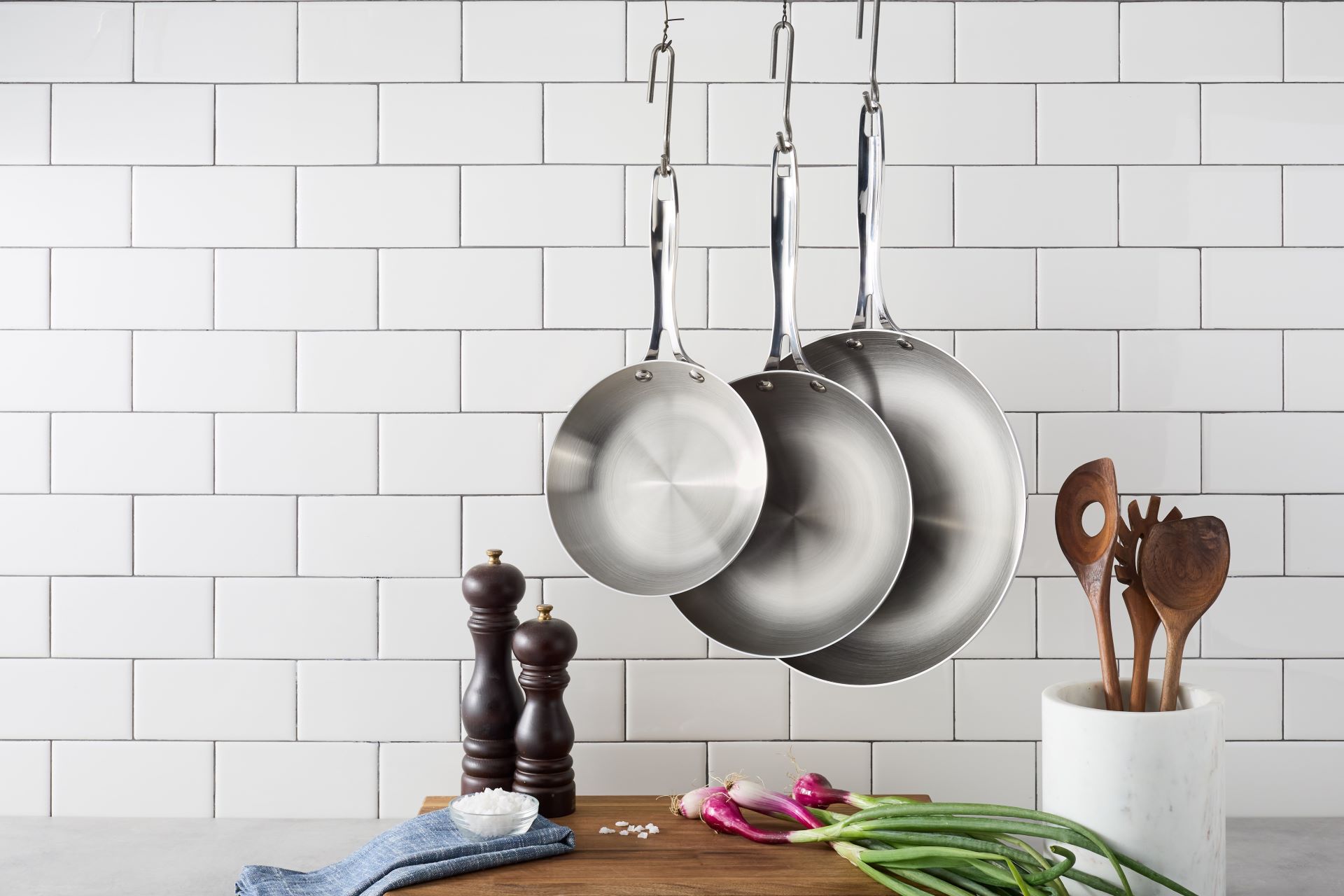Become the Hostess With The Mostest


Stainless steel skillets are prized for their durability, versatility and ease of maintenance, making them a staple in many kitchens. However, one common challenge is that food can stick to them, unlike their nonstick or cast iron counterparts.
While it’s not possible to transform a stainless steel pan into a permanently nonstick surface in the same way you can season a cast iron skillet, there are techniques to greatly reduce sticking and make cooking with stainless steel smoother and more enjoyable.
Hungry for more? From skillets and sauté pans to pans designed for every day—and every meal—our collection of Stainless Steel Cookware has just the piece you’re looking for.

Firstly, it’s important to address the question of whether you can season a stainless steel pan like cast iron to create a nonstick surface. The short answer is no; the process and outcome are not the same.
Cast iron skillets are seasoned by baking oil onto the pan’s surface, creating a protective and nonstick layer. This is effective due to cast iron’s porous nature, which allows it to absorb and retain the oil.
Stainless steel, on the other hand, is nonporous and does not hold onto the seasoning layer in the same way. Thus, the traditional seasoning process is not effective for creating a permanent nonstick surface on stainless steel.

Seasoning a stainless steel pan is more about creating a temporary nonstick surface than permanently altering the pan’s properties. This temporary seasoning can be particularly useful when cooking proteins like fish or eggs, which are notorious for sticking. Here’s how to season your stainless steel pan:

While a stainless steel skillet cannot be seasoned to become permanently nonstick in the same manner as cast iron, adopting specific maintenance techniques can greatly minimize food sticking. Here are some tips for proper cleaning and care:
Hungry for more? From skillets and sauté pans to pans designed for every day—and every meal—our collection of Stainless Steel Cookware has just the piece you’re looking for.
New to stainless steel cooking there for a learning process
I too am learning after weaning myself off of non stick pans. Lemon and salt have some in handy as well